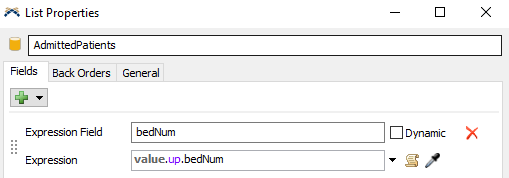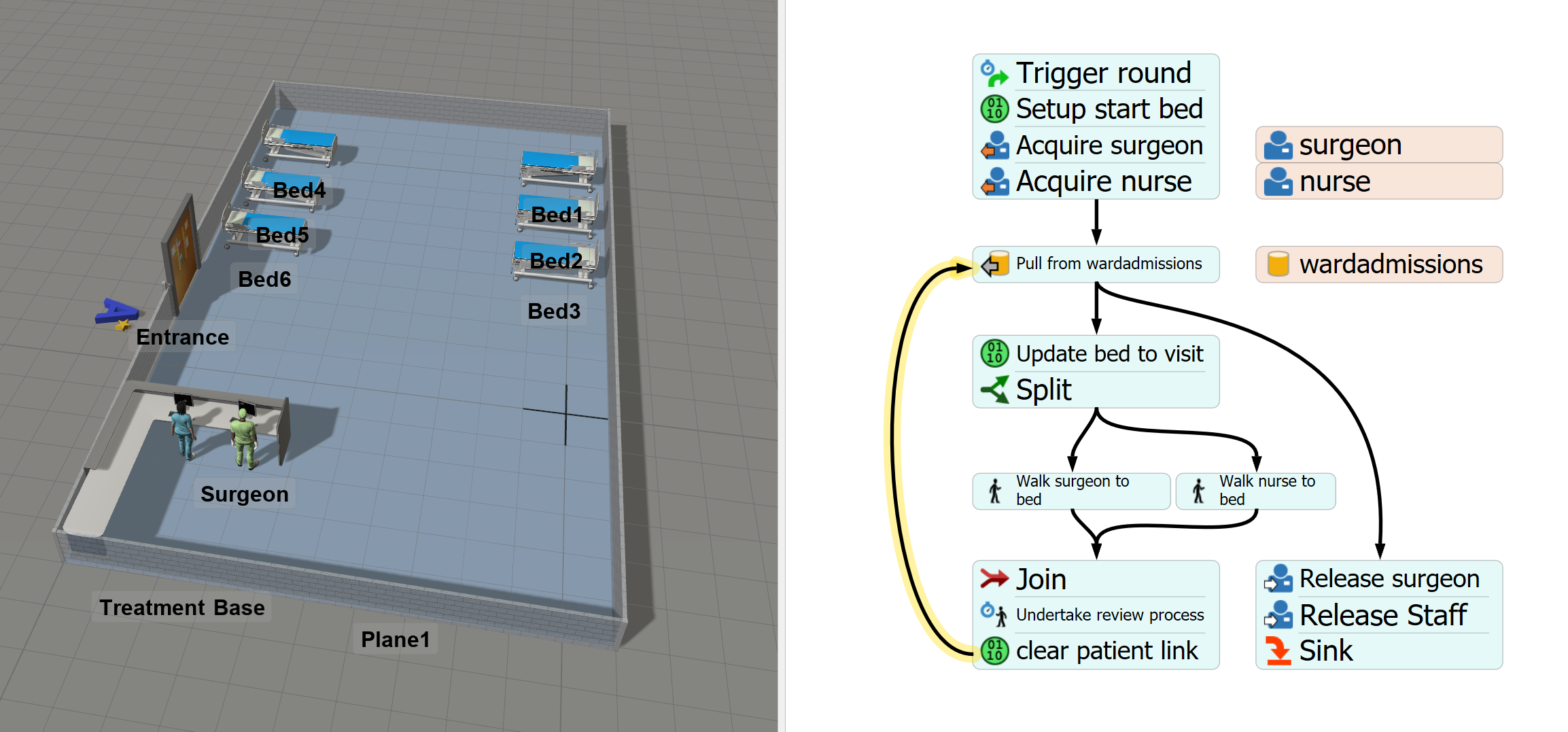I'm looking for some conceptual pointers on how to get started with creating a 'medical ward rounding' activity within a model.
The background scenario is a ward of admitted patients, who trigger random processes (reflecting unplanned medical events etc).
I'd like to add to this a medical rounding task, where;
- A set group of staff gather,
- They travel together to each bedside in sequential order,
- Undertake some process time there and
- Trigger additional flows of activites (eg a non urgent blood sample) for the patient occupying the bed
The model has a particular interest in things like staff distances travelled, so getting this to work in the appropriate bed order is also really important.
All the modelling I've done to date has been 'patient' initiated; what I'm struggling to conceive here is how to approach the problem when I want to control the order the staff behave in externally from a patient flow, and that I want a resource to push a task onto a patient flow.
I've looked at lists (but got stuck on them being within the individual flows), creating separate process flow for just staff (but struggled to push tokens back onto the patient flow) and wait for event (but not worked out how to make sure staff are acquired by patients in right order).
Not necessarily looking for a full solution, but would be grateful for thoughts on what concepts/tools within Flexsim I should be exploring for this kind of activity as I'm not even sure what direction to start in. It feels like the global process route is most promising, but I'm not sure how to push tasks back onto the patient flow with this route.
(I'm surprised a similar question hasn't come up in forum, but can't find it through search - feel free to signpost. I've seen the patient-rounds example, but appears not to work in FS2020/22. I also can't see how this approach controls order of beds/patients visited)



